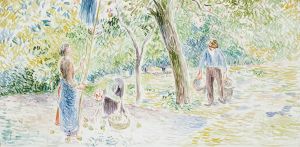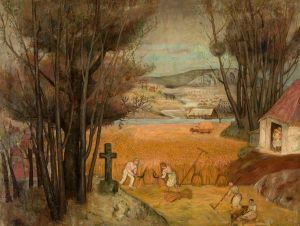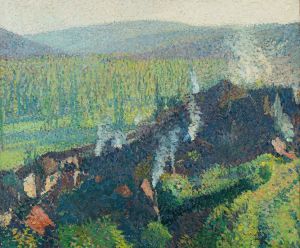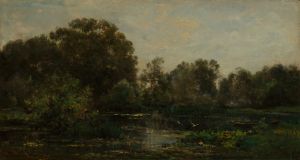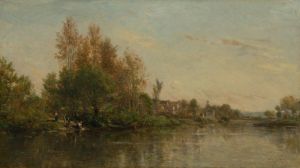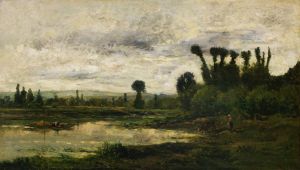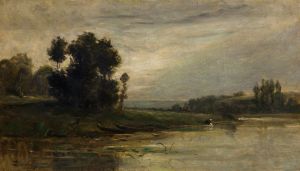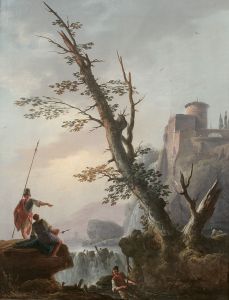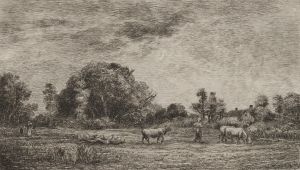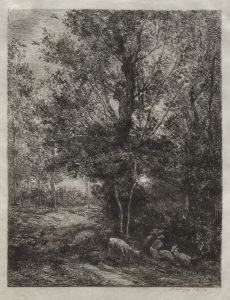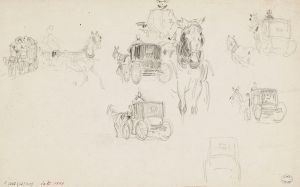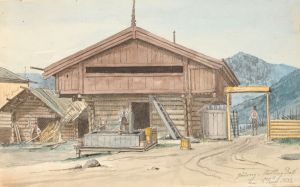
The Large Sheepfold
A hand-painted replica of Charles François Daubigny’s masterpiece The Large Sheepfold, meticulously crafted by professional artists to capture the true essence of the original. Each piece is created with museum-quality canvas and rare mineral pigments, carefully painted by experienced artists with delicate brushstrokes and rich, layered colors to perfectly recreate the texture of the original artwork. Unlike machine-printed reproductions, this hand-painted version brings the painting to life, infused with the artist’s emotions and skill in every stroke. Whether for personal collection or home decoration, it instantly elevates the artistic atmosphere of any space.
"The Large Sheepfold" is a painting by the French artist Charles François Daubigny, who was an influential figure in the Barbizon School, a movement that emphasized naturalism and the depiction of rural landscapes. Daubigny was born in Paris on February 15, 1817, and became known for his innovative approach to landscape painting, often working en plein air (outdoors) to capture the natural light and atmosphere of the countryside.
"The Large Sheepfold" (French: "La Grande Bergerie") is one of Daubigny's notable works, exemplifying his skill in portraying rural scenes with a sense of tranquility and realism. The painting depicts a pastoral scene with a large sheepfold, where sheep are gathered, tended by a shepherd. The composition is characterized by its expansive view of the landscape, with a focus on the harmonious relationship between humans, animals, and nature.
Daubigny's technique in this painting reflects his mastery of light and shadow, as well as his ability to convey the textures of the natural environment. The use of soft, muted colors and delicate brushwork creates a serene and atmospheric effect, inviting the viewer to experience the peacefulness of the rural setting.
The Barbizon School, to which Daubigny belonged, was named after the village of Barbizon near the Forest of Fontainebleau, where many of its members gathered to paint. This movement emerged in the mid-19th century as a reaction against the formalism and artificiality of academic art. Artists of the Barbizon School, including Daubigny, sought to depict the natural world with honesty and sensitivity, often focusing on scenes of everyday rural life.
Daubigny's work, including "The Large Sheepfold," had a significant influence on later landscape painters, particularly the Impressionists. His emphasis on capturing the transient effects of light and atmosphere can be seen in the works of artists such as Claude Monet and Camille Pissarro, who admired and were inspired by Daubigny's approach to painting.
Throughout his career, Daubigny received numerous accolades and exhibited his works at the Paris Salon, the official art exhibition of the Académie des Beaux-Arts in Paris. His contributions to landscape painting were widely recognized, and he was awarded the Legion of Honour in 1859.
"The Large Sheepfold" remains an important example of Daubigny's artistic legacy, showcasing his dedication to depicting the beauty and simplicity of rural life. Today, his works are held in various museums and collections around the world, continuing to be appreciated for their contribution to the development of modern landscape painting.






